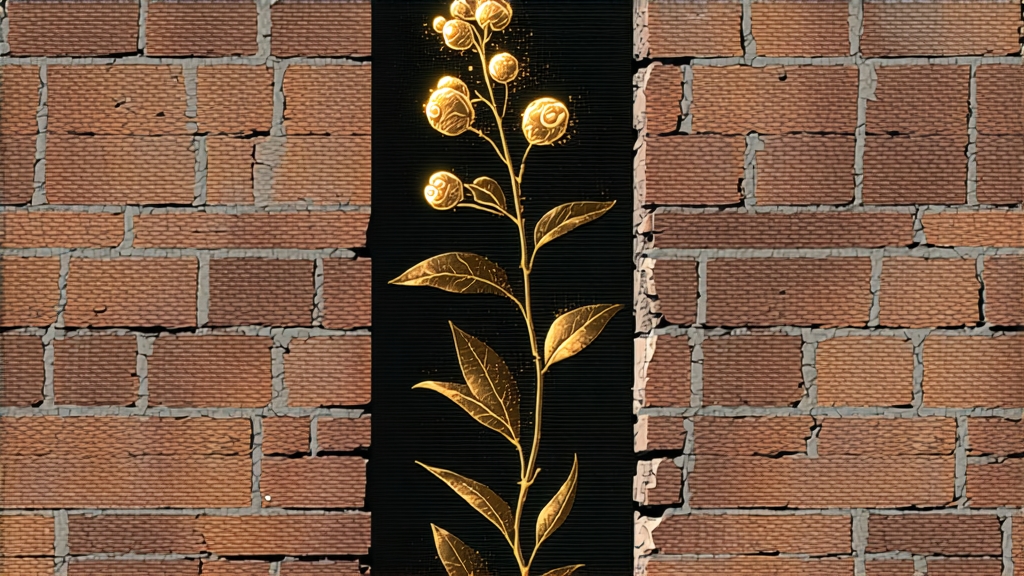
When most tea lovers outside China speak of dark tea, they usually mean the fully oxidised leaves of Assam or Ceylon. Yet on the ancient caravan tracks that once linked Chang-an to Samarkand, another kind of “black” tea—literally dark as midnight—was pressed into brick forms so hard that they could double as currency. Among those bricks, none carries a more romantic legend or a more surprising microbiological signature than Fu brick tea, a sub-style of Hunan hei cha whose interior is tattooed with a luminous yellow dust known as “golden flowers.”
1. From Frontier Necessity to Imperial Tribute
The story begins in the 1360s, when the newly founded Ming court decreed that Sichuan and Hunan must supply tea to the horse-trading garrisons on the north-western frontier. Compressed bricks travelled better than loose leaf, and the humid journey along the Yangzi and over the Qinling mountains triggered incidental fermentation. Locals noticed that the same bricks, if stored in the muggy July air of Jingyang county, developed a sweet, fungal aroma and a crimson liquor that calmed stomachs fed on mutton and yoghurt. By 1644 the Qing government had opened an official “Tea-Horse Office” in Xianyang, and Jingyang fu zhuan cha—literally “Fu brick tea made for the government”—became a sanctioned tribute item. Caravans carried it to Lhasa, Kashgar and, eventually, the Russian trading post of Kyakhta, where Siberian fur merchants exchanged sable pelts for dark bricks stamped with the Chinese character “Fu,” a homophone for fortune.
2. What Exactly Is a Fu Brick?
Hei cha is an umbrella category that includes Yunnan ripe pu-erh, Guangxi Liu Bao, Sichuan border tea, Hubei Qing zhuan, and Hunan Qian liang. Fu brick is the only member whose final quality is judged by the density of Eurotium cristatum spores that germinate inside the brick. These spores form tiny golden globules—hence the nickname “golden flowers” (jin hua). A premium Fu brick must carry no fewer than 500,000 colonies per gram; anything less is downgraded to mere “dark brick” and sells for half the price.
3. Leaf to Brick: A Six-Month Microbial Journey
Fu production follows the classic Hunan kill-green, rolling, piling sequence, but then diverges into a unique post-fermentation stage that lasts up to 180 days.
Step 1: Raw Leaf
Early May plucking of Yuntaishan large-leaf cultivar yields buds plus the first three leaves. The leaf is naturally high in polysaccharides, the preferred food of Eurotium.
Step 2: Pan-Firing
A 280 °C wok kill-green lasts only 45 seconds—short enough to preserve oxidative enzymes that will matter later.
Step 3: Rolling & Sun-Drying
The twisted leaf is sun-withered on bamboo mats until moisture drops to 12 %. The semi-dry mao cha resembles withered hay and smells of cooked pumpkin.
Step 4: Wet Piling (Wo Dui)
Mao cha is sprayed to 28 % moisture, heaped 70 cm high, and covered with hemp cloth. Internal temperature climbs to 55 °C within 24 hours; thermophilic bacteria convert catechins into theaflavins and gallic acid, softening bitterness. After 15 days the leaf turns walnut brown.
Step 5: Steam-Pressing
The fermented leaf is re-steamed for 8 seconds at 105 °C, then tipped into a 2 kg wooden mould lined with cotton. A hydraulic press exerts 50 tonnes of pressure for 20 minutes, compacting the leaf to half its original volume.
Step 6: Golden-Flower Incubation
Bricks are transferred to a sub-tropical “flower room” kept at 28 °C and 78 % relative humidity. Over the next 30–50 days Eurotium cristatum blooms, visible first as white filaments, then as pin-prick yellow dots. Masters turn the bricks twice a week to ensure even oxygen flow.
Step 7: Drying & Wrapping
Once the target spore count is reached, bricks are slowly dried at 45 °C for